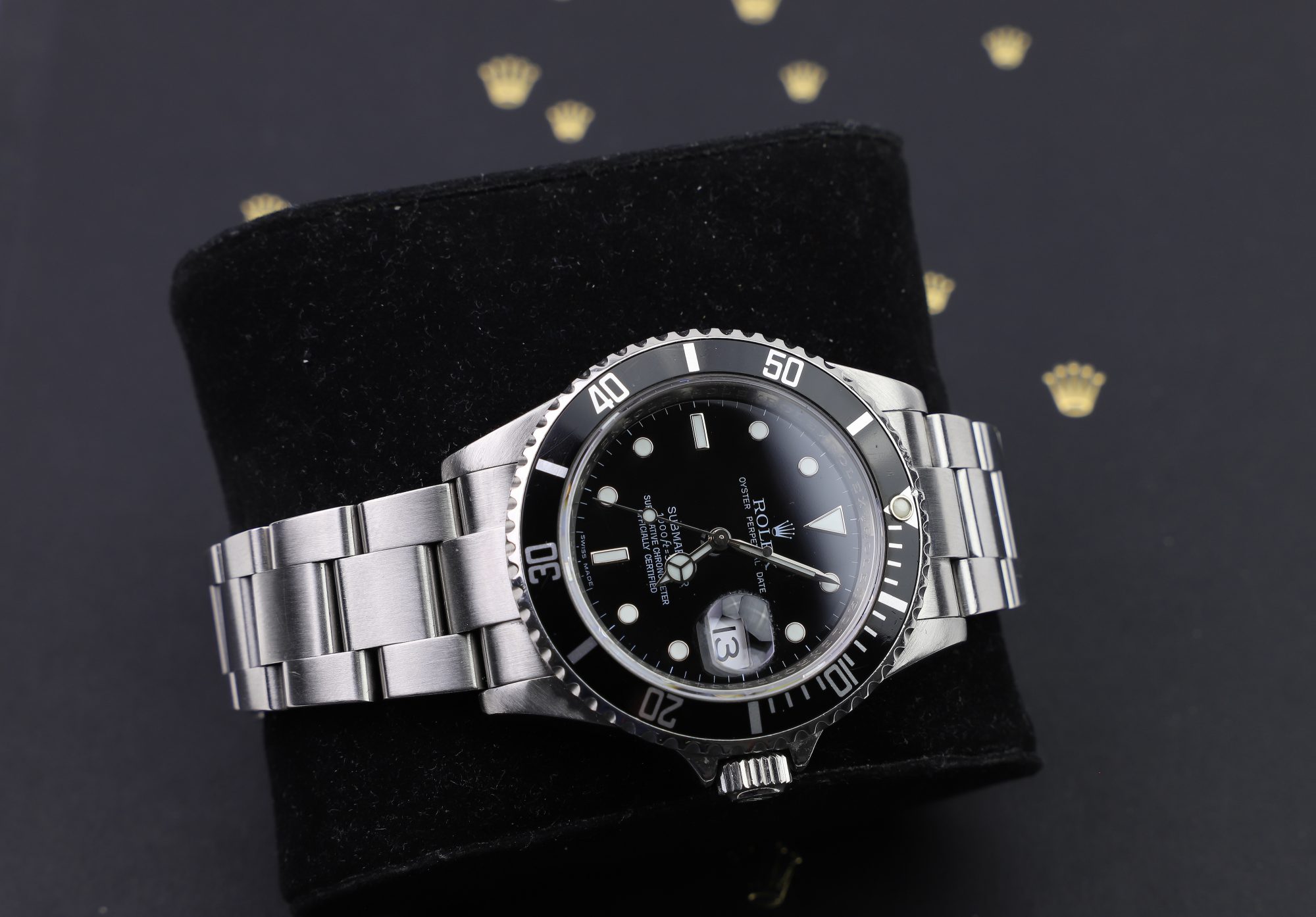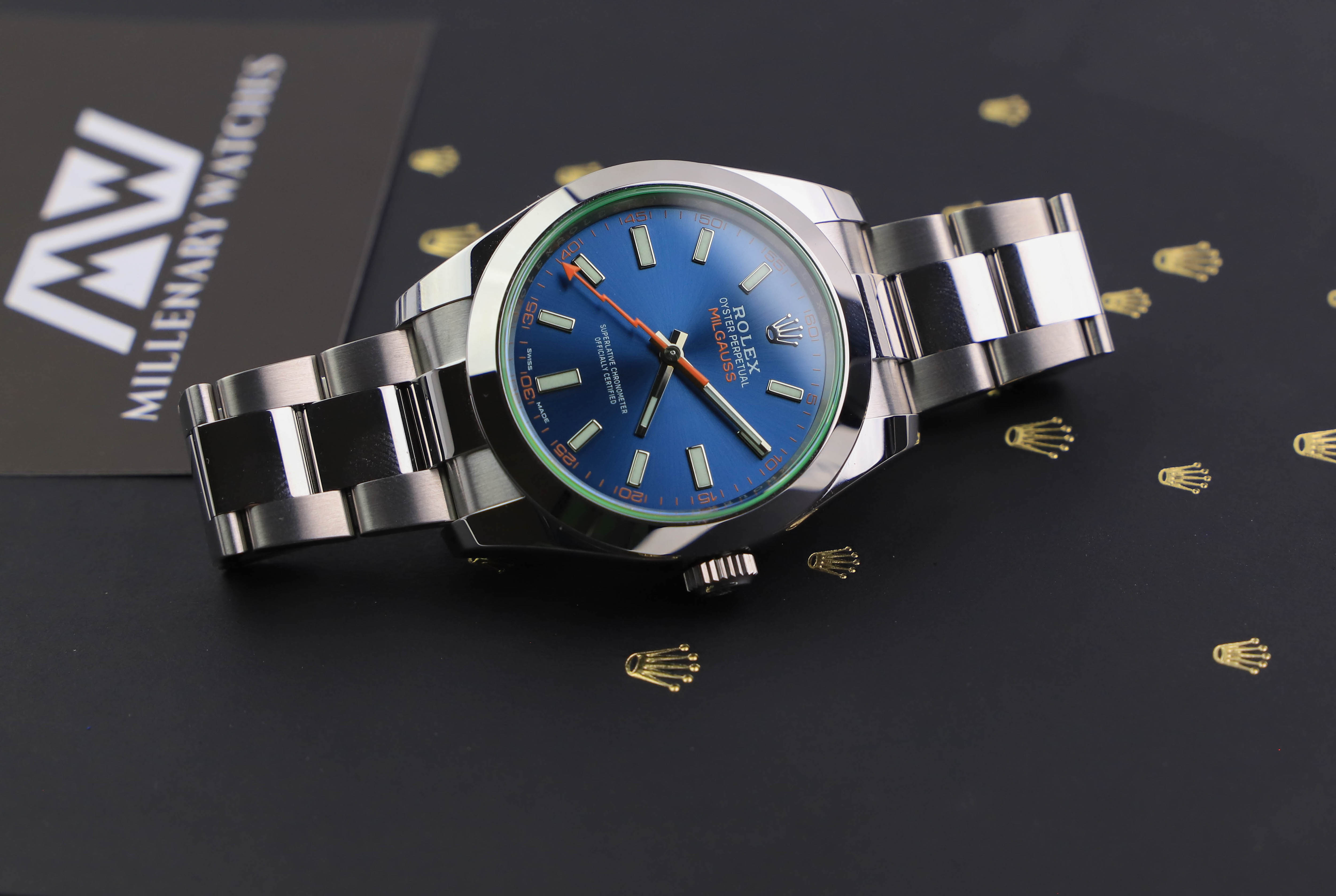
When were Rolex’s different models first released?
Rolex has a large number of watches in its portfolio. Every year, new watches are introduced, and some existing models are discontinued. Being so traditional and orthodox, Rolex does not make huge changes to its collection of watches.
In fact, it’s rare to see Rolex discontinue a whole model collection, which is why still to this day, most of Rolex’s watch collections are still in production.
Rolex was originally – just like most other watch manufacturers – a company that made tool watches that were crucial for the performance of people in their respective fields. Whether that is helping divers keep track of elapsed time, or helping businessmen stay on time.

The way people wear watches today looks slightly different, but still, Rolex has kept the vast majority of its collections alive.
So now to the question, when did Rolex introduce its various collections? We all know the Submariner, Datejust, Daytona, and all the other iconic models from Rolex, but when were they first introduced? As you know, Rolex continuously improves and refines the watches that are in its model collections, while still keeping them under the same roof. This means improving the movement, build quality, finish, and overall reliability.
Now, let’s look at the introduction years of Rolex’s different model collections.
Introduction Years of Rolex models and collections
1931: Oyster Perpetual
Rolex released the first Oyster Perpetual in 1931. At the time of its release, it was a revolutionary watch since the movement was automatic and equipped with a rotor. Hence the name ”perpetual”. The Oyster Perpetual is still in Rolex’s collection today and is the simplest and most basic watch in its range, featuring a three-hand set-up, and only made in stainless steel.
1938: Bubble Back
Rolex released the bubble back in 1938. This has long been discontinued, but today it has become a popular model amongst collectors. The name refers to the casebook which points out like a bubble.
1945: Datejust
Rolex’s iconic Datejust model first saw the light in 1945. Initially, it didn’t have a cyclops over the date window which is a signature design element of the watch today. Seeing that this is one of Rolex’s most iconic models, it’s likely that Rolex will never discontinue this model.
1953: Submariner 100m
Rolex released the first Submariner model in 1953. The first Submariner had a 100m water resistance. Today, the Rolex Submariner has become the definition of a dive watch, and the design has heavily influenced the whole watch industry.
1953: Turn-O-Graph
Rolex released the turn-o-graph in 1953, and if you are familiar with Rolex’s range of watches, you know that this has been retired from Rolex’s range.
The turn-o-graph is essentially a Datejust with a rotating bezel that has 60-minute markings.
1953: Explorer
The iconic Rolex Explorer model name first saw the light in 1953. Rolex developed this watch, as the name suggests, for explorers. It was meant to be a robust and tough explorer’s watch that could last extreme temperatures, shocks, and more.
1954: GMT-Master
The first GMT-Master from Rolex was released in 1954. As air travel became more common, Panama airlines requested that Rolex developed a watch that could keep track of multiple timezones simultaneously which their pilots could use. The result was the first GMT-Master, carrying the reference number 6542.
1954: Lady Oyster Perpetual
Rolex updated its Oyster Perpetual range in 1931, in 1954 to make it available to women as well. The new lady Oyster Perpetual collection meant releasing smaller watches that would fit a woman’s wrist well.
1956: Day-Date
Rolex’s iconic Day-Date model was released in 1956. The model was revolutionary since it displayed both the day and the date on the dial – hence its name.
1956: Milgauss
The Milgauss was released in 1956 and developed for scientists and other individuals working in laboratories etc. who would regularly come in contact with strong magnetic fields. The issue with mechanical watches is that strong magnetic fields affect the accuracy of the watches, but the Milgauss was Rolex’s answer to this.
The name Milgauss comes from the two words mille and gauss. In English, a thousand gauss. The watch was developed to be able to withstand 1000 gauss without losing accuracy.

1957: Lady Datejust
The Datejust collection was broadened in 1957 thy introducing watches for women in the Datejust collection.
1961: Oyster Cosmograph
The Oyster Cosmograph was introduced in 1961. This was the predecessor to the Daytona, which today is one of Rolex’s most iconic models. This watch was one of Rolex’s earliest chronographs (but not the earliest). Previously, the Cosmograph did not have screw-down crowns to ensure the water-resistance. The Oyster Cosmograph, as the name suggests, was the first chronograph from Rolex to have screw-down pushers.
1963: Cosmograph Daytona
The Rolex Daytona was released in 1963. This was the first time that Rolex would use the name Daytona for its chronograph model. As you may know, the name derives from the famous race on Daytona beach.
1967: Sea-Dweller
As demand for a reliable and sturdy dive watch for professional divers increased, and the Submariner was not robust and waterproof enough, Rolex released the Sea-Dweller.
The main difference that the Sea-Dweller has is a helium escape valve, which further improves its water resistance.
1969: Submariner Date
Rolex released the first Submariner to feature a date function in 1969. Previously, all Submariner watches were made without a date function. This is reasonable considering the fact that you don’t need to keep track of the date when diving. But this also goes to show that people started wearing watches not only when diving.
1971: Explorer II
The first Rolex Explorer II was released in 1971. The idea behind this model is the same as the first Explorer, but Explorer II features a GMT function with an additional hour hand which enables the wearer to keep track of multiple timezones simultaneously.
1976: Oysterquartz
During the quartz crisis, Rolex released the Oyster quartz. Rolex eventually discontinued this collection and went back to focusing only on mechanical models again. But the Oysterquartz really is an interesting part of Rolex’s history.
1979: Submariner 300m
In 1979, Rolex released the Submariner with improved water resistance to 300 meters.
1983: GMT-Master II
Rolex released the GMT-Master II in 1983. Previously, the range was known as only GMT-Master. The GMT-Master II collection is still alive today.
1988: Cosmograph Daytona (Zenith Movement)
In 1988, Rolex released a new Cosmograph Daytona featuring a zenith-based movement. Rolex called the movement the 4030 because they modified the moment so heavily that they called it ”their own”.
1992: Yacht-Master
Rolex released the Yacht-Master model in 1992. The idea of the Yacht-Master was to make a more exclusive and luxurious version of the Submariner.
1992: Pearlmaster
Rolex released the Pearlmaster in 1992. This is essentially a more exclusive version of the Datejust collection, made primarily for ladies.
1994: Yacht-Master Lady
Rolex updated its Yacht-Master collection in 1994 to also feature lady-sized versions and mid-size watches.
2000: Cosmograph Daytona With In-house Movement
In the year 2000, the Daytona was finally released with an in-house movement. The movement is called 4130 and is entirely made in-house.
2007: Yacht-Master II
Rolex released the complicated and unique Yacht-Master II in 2007. The Yacht-Master II is one of Rolex’s most mechanically complicated timepieces.
The Yacht-Master II is a true regatta chronograph with a fully programmable countdown timer.
2008: Deepsea Sea-Dweller
Rolex released its most serious dive watch to go into public production in 2008 – the Deepsea Sea-Dweller.
The Deepsea Sea-Dweller is a large and bulky version of the Submariner, but instead of 300-meter water resistance, it has a water resistance of 3900 meters.
2008: Day-Date II
Rolex released a new version of the Day-Date in 2008, the Day-Date II. The style of the case and bezel was slightly reshaped, and the watch was made bigger – to 41mm to meet the size ideals of the time.
This model was later discontinued in favor of the new Day-Date 40, with a 40mm case size, and a much neater and elegantly shaped case. Comparing the two will reveal that the Day-Date II was rather bulky and clumsy for a dress watch, which the Day-Date is supposed to be. So Rolex discontinued it.
2008: Oyster Perpetual 36mm
Rolex released the Oyster Perpetual 36mm in 2008.
2009: Datejust II
Similar to the Day-Date II, the Datejust II was made to meet the size ideals of the time. The case was made larger – to 41mm, and the proportions such as the bezel changed.
2012: Sky-Dweller
Rolex released the Sky-Dweller model in 2012. The Sky-Dweller is, together with the Yacht-Master II Rolex’s most mechanically complicated timepiece.
The Sky-Dweller features Centre hour, minute, and seconds hands. 24-hour display on the off-center disc. A second-time zone. Instantaneous annual calendar at 3 o’clock and rapid-setting of the date. Month display via 12 apertures around the circumference of the dial. Stop-seconds for precise time setting.
2015: Day-Date 40 mm
Rolex discontinued the Day-Date II and released the Day-Date 40 in 2015.
2015: Oyster Perpetual 39 mm
The Oyster Perpetual was released in a 39m size in 2015 and at this time, the brand introduced a bunch of new bright and fun dials, such as purple, green, blue, etc.
2016: Datejust 41
Rolex discontinued the Datejust II and replaced it with the Datejust 41, which was released in 2016. The proportions were refined and the watch was made more elegant.
2019: Yacht-Master 42 on Oysterflex Bracelet
The first Yacht-Master to have a 42mm case was released in 2019. The Yacht-Master 42 has a full white gold case and is equipped with an Oysterflex rubber strap.




